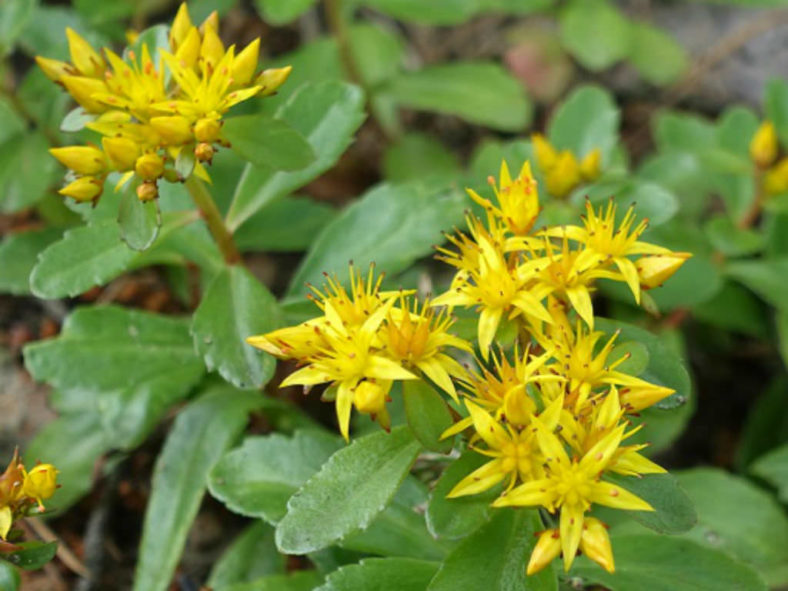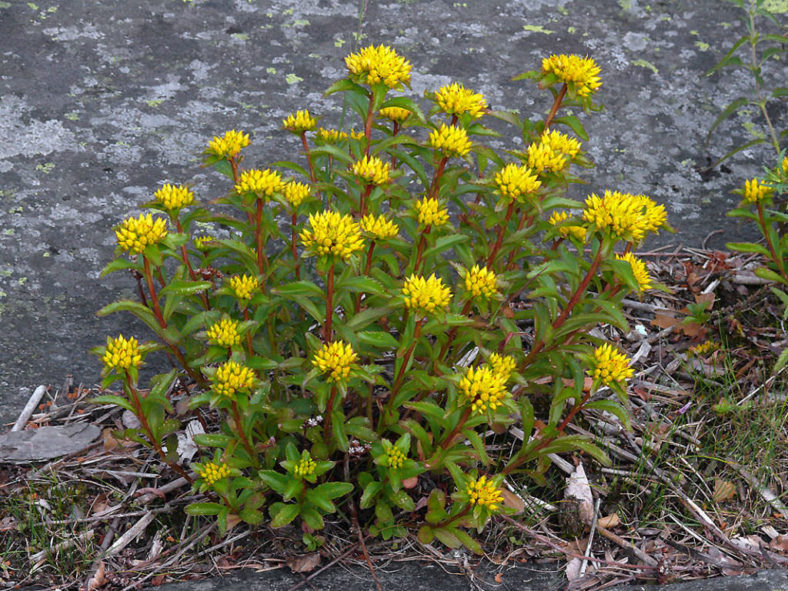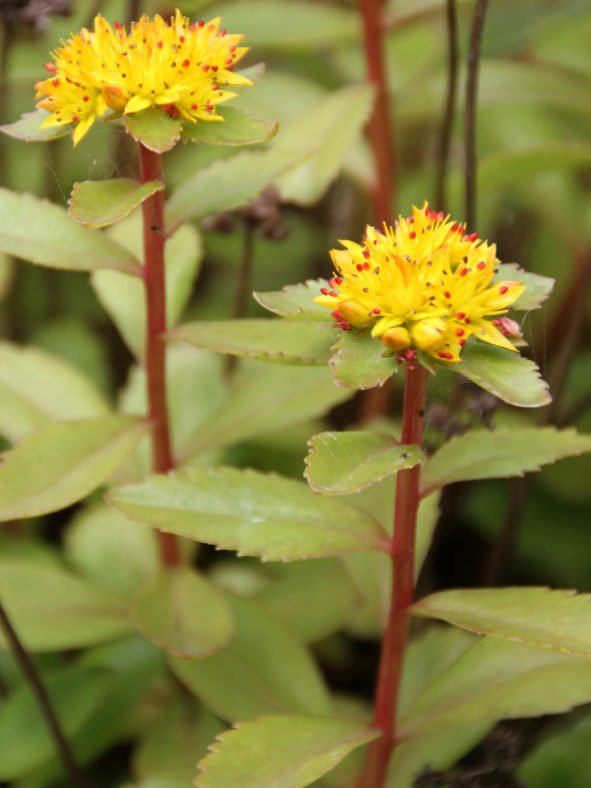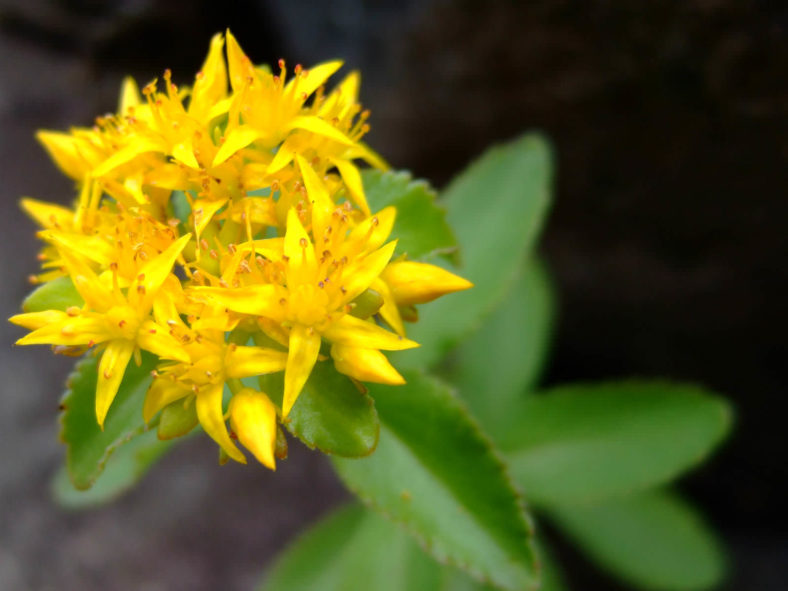Scientific Name
Phedimus aizoon (L.) 't Hart
Common Name(s)
Aizoon Stonecrop, Fei Cai, Orpin Aizoon
Synonym(s)
Aizopsis aizoon, Anacampseros aizoon, Phedimus aizoon var. aizoon, Sedum aizoon
Scientific Classification
Family: Crassulaceae
Subfamily: Sempervivoideae
Tribe: Umbiliceae
Genus: Phedimus
Etymology
The specific epithet "aizoon (AY-zoon)" means "evergreen, everliving or always alive" and probably refers to the tendencies of most Stonecrops to live eternally.
Origin
Phedimus aizoon is native to China, Japan, Mongolia, and Russia.
Description
Phedimus aizoon, formerly known as Sedum aizoon, is a succulent plant with upright, usually unbranched stems that grow from a large, swollen, woody rootstock. It can grow up to 32 inches (80 cm) tall with a spread sometimes equal to the height. The leaves are bright green with irregularly toothed margins, measuring up to 3.6 inches (9 cm) long and 1.2 inches (3 cm) wide.
The stems are topped with clusters of bright yellow star-shaped flowers in summer.

How to Grow and Care for Phedimus aizoon
Light: These light-loving plants will tolerate light or partial shade but prefer full sun and grow best in warmer environments.
Soil: Phedimus thrive in any well-drained soil. Good drainage is critical for preventing root rot or fungal diseases.
Hardiness: Phedimus aizoon can withstand temperatures as low as -30 to 30 °F (-34.4 to -1.1 °C), USDA hardiness zones 4a to 9b.
Watering: The best way to water your Phedimus is to use the "soak and dry" method. Get the soil completely wet, and then wait until the soil is dry before watering again.
Fertilizing: Feed with low-balanced fertilizer to keep your plants happy and healthy. Use a diluted dose of half the strength recommended on the package.
Repotting: Repot your plants when they outgrow their current pot by moving them to a larger container to hold the plant better.
Propagation: Phedimus can be grown from seeds, division, or stem cuttings.
Learn more at How to Grow and Care for Phedimus.
Toxicity of Phedimus aizoon
Phedimus plants can be mildly toxic to humans and animals.
Varieties of Phedimus aizoon
Links
- Back to genus Phedimus
- Succupedia: Browse succulents by Scientific Name, Common Name, Genus, Family, USDA Hardiness Zone, Origin, or cacti by Genus
Photo Gallery
Click on a photo to see a larger version.


